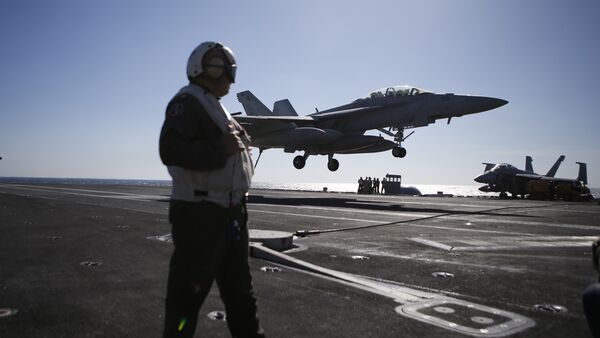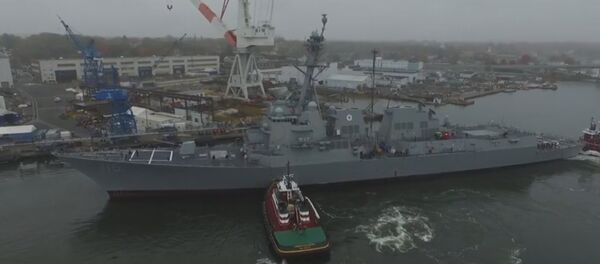Money problems have also led to a growing backlog of aircraft that need repairs, and for three years almost every carrier has taken longer than usual to refit, with some submarines out for four years or longer.
The Navy claims that 15 percent of its facilities are awaiting replacement, demolition or repair, and the service is also having trouble finding the money to move sailors and their families. Every year the Navy must dole out $440 million in sailor pay alone.
It is not clear how this reality will square with US President Donald Trump’s ambition to grow the number of naval ships from 308 to 350, a call that was recently surpassed by Chief of Naval Operations Adm. John Richardson, whose Force Structure Assessment called for a fleet of 355 ships.
Announcing the results of the assessment in December 2016, Navy Secretary Ray Mabus said, "To continue to protect America and defend our strategic interests around the world, all while continuing the counterterrorism fight and appropriately competing with a growing China and resurgent Russia, our Navy must continue to grow," adding that, "All of the analysis done to date, inside and outside of the Navy, recognizes, as we have for nearly the last eight years, the need for a larger Fleet," according to the Navy’s website.
Several years of declining budgets, mandated by the Obama administration and the US Congress, will likely make this goal difficult.
As a part of Trump’s "peace through strength" military strategy, Defense Secretary James Mattis released a memorandum in late January describing a three-phase plan that addresses some of the military’s money issues.
The memo read, in part, "The president and I are committed to strengthening the US Armed Forces…The ultimate objective is to build a larger, more capable and more lethal joint force, driven by a new National Defense Strategy."
A senior Navy employee told Defense News in early February, "If we get any money at all, the first thing we’re going to do is throw it into the places we can execute it…All of those places are in ship maintenance, aviation depot throughput — parts and spares — and permanent changes of station so we can move our families around and fill the holes that are being generated by the lack of PCS money."
One Navy official stated, "Our priorities are unambiguously focused on readiness — those things required to get planes in the air, ships and subs at sea, sailors trained and ready…No new starts."
Overall, 53 percent of Navy aircraft are not airworthy. That number includes about 1,700 helicopters, transport and patrol planes, and combat aircraft.





